Tundra ecosystems are characterized by low stature vegetation, which covers the cold polar and alpine soils with dense mats of cryptogams, grasses and dwarf shrubs. Tundra is the area extending beyond the thermal limits of tree growth and reaching up until the permanent snow and glacier fields of the nival zone. Its climate is rather harsh and plants have no longer than three months to accomplish their annual cycle observable aboveground. Belowground, however, roots and storage organs of vascular plants are already active long before the thaw of seasonal snow cover, providing sugars and nutrients for the first leaves to unfold. At the end of the growing season, they also turn to dormancy more than a month after the last leaves are shed, extending in length in search of nutrients and stocking up on reserves for the long winter.
The longer growing season of roots compared to shoots is paralleled by much larger biomass, with up to 80% of plant parts found belowground. If we are to understand the consequences of climate change on driving vegetation shifts in tundra ecosystems, such as tree and shrub encroachment for instance, we have to evaluate changes belowground, where most of the plant parts are found! This is the goal of our project ALTER, where we want to assess the functional role of different vegetation types for the carbon sink and source potential of tundra ecosystems. Doing this in a controlled experimental environment, allows us to bypass context dependency of observational studies and provide a mechanistic understanding of the underlying ecosystem processes. We are an international and interdisciplinary team of seven early career scientists, who met in Abisko and decided to set up this long-term experimental platform in 2018.
The aim of the project is to peek into the “black box” of arctic soils and monitor non-destructively and at high spatial and temporal resolution the dynamics of fine root and hyphae production, phenology and turnover, associated with the different vegetation type assemblages. The SPI Exploratory Grant was instrumental to equip the experimental plots with minirhizotron tubes, as the primary tool to capture root dynamics in the field; micromesh collar exclosures – to partition plant root vs. soil microbial contribution to belowground processes and CO2 emissions; and in-growth mesh bags – to quantify fungal hyphae production and composition. Further, we deploy isotopically labelled litterbags within the topsoil and harvest them sequentially to quantify soil organic matter decomposition vs. stabilisation; assess fungal and bacterial diversity on the basis of genetic biomarkers; and link that to microbial physiology and function, in terms of biomass, extracellular enzymatic activities, carbon use efficiency and associated priming effects. A mouthful for the planned three-week journey across the Arctic Circle.
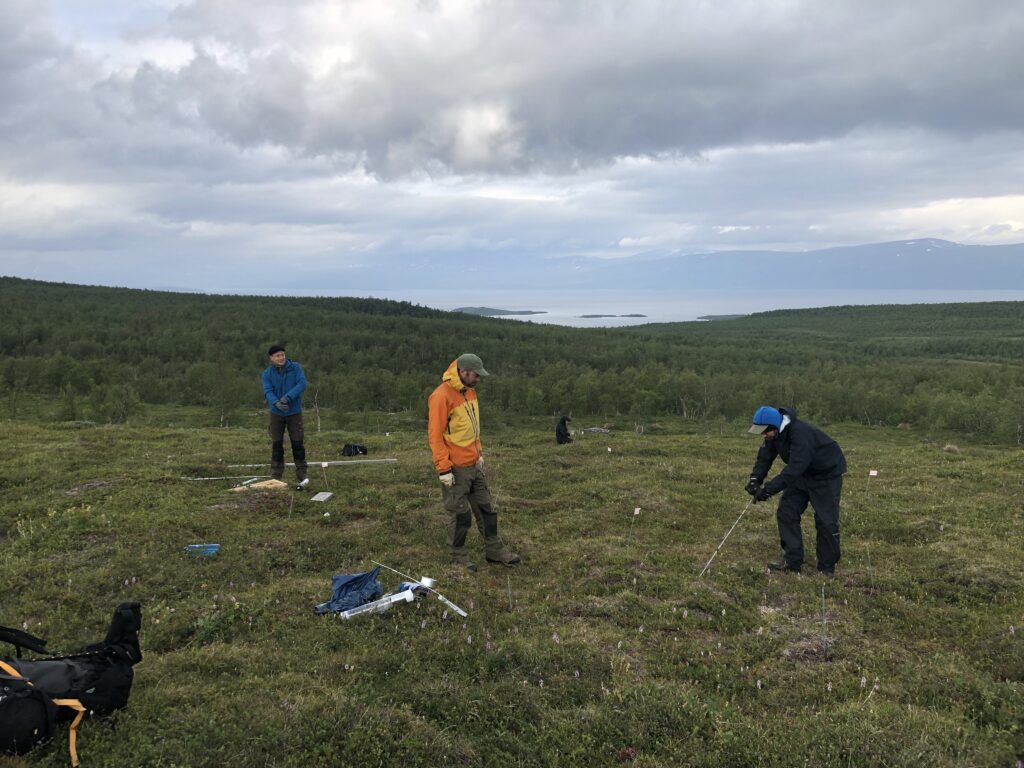
Preparing for the intensive field season in Absiko, in spring 2021, our team started scavenging for all the bits and pieces needed to carry out manual construction works in a remote arctic field site. We were lucky to have chosen Abisko, as it is perhaps one of the most easily accessible field stations beyond the Arctic Circle. The challenge was to have all of the gear shipped there in time for our planned visit and have it stored safely. Having two of the team members permanently based in Abisko definitely helped putting a hand on several stray postal packages. Also, having already gone through a Covid-19 summer the previous year, we were rather confident that there couldn’t possibly be anything that would mess up with our perfect planning and preparation. That was until we heard in early summer from POLAR operating the Abisko Research Station, that they had adopted a five-member-per-research-team rule for lodging at the station and we could chose to either cancel our field trip or find alternative housing. One would think the latter option easy with a Swedish Tourist Association hotel next door as well as several guesthouses and cabins. Yet, the late notice and the packed summer tourist season in Abisko did not play to our advantage. We could only find a free cabin in the Bjorkliden resort some 10 km further down the road to Norway, which required us renting a car for a daily commute to work.
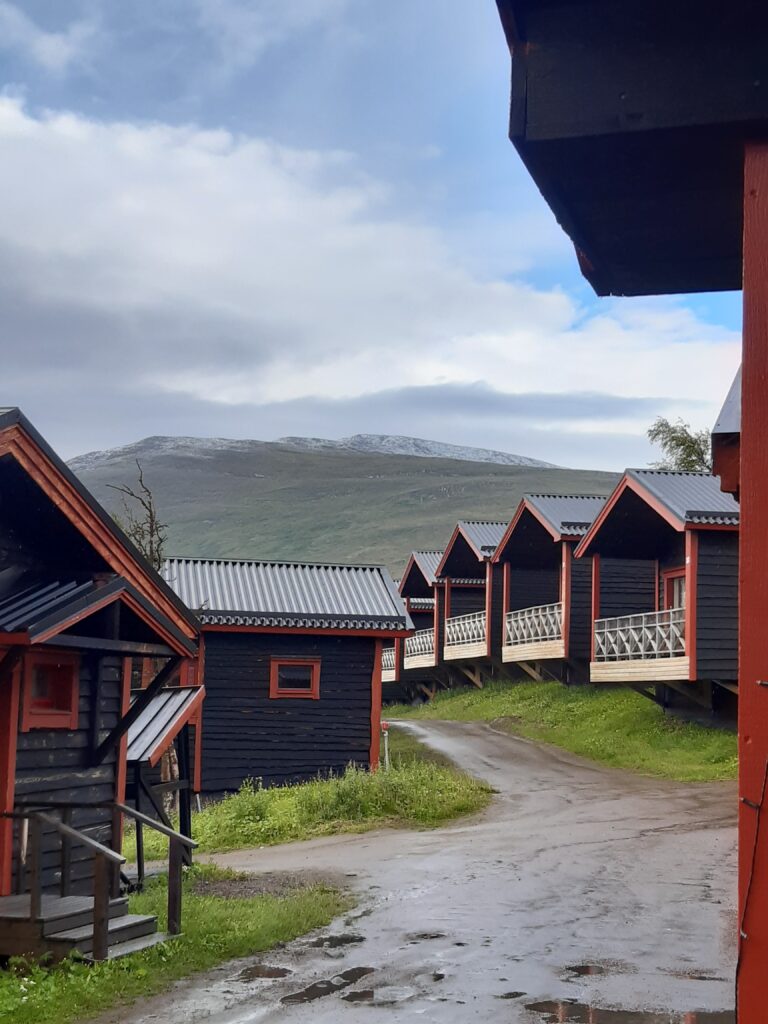
Having travelled myself 3500 km from Lausanne by train, in order to limit my environmental impact, this option seemed outrageous, yet essential for carrying out the project. The bonus of having access to a small sauna in our cabin after the long days in the field tipped the psychological balance for me. There was also an amazing beach on the Tornetrask lakeshore that we drove past daily with some of the best stone skipping opportunities out there. A perfect spot to find a peace of mind during a hectic field campaign.
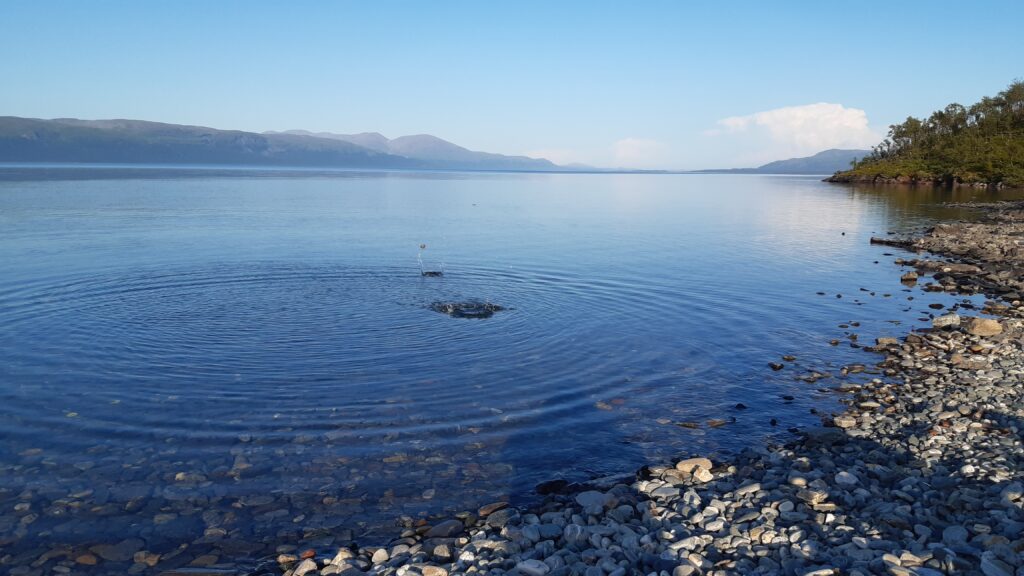
The work itself unrolled much better than what we had hoped for. We could borrow from POLAR a Dutch auger for installing the minirhizotron acrylic tubes, which is much easier than hammering or drilling at the desired 45° angle to the soil surface. Also, the custom-made soil corer from EPFL’s metal workshop with laser-sharpened edge was perfect for taking undisturbed organic-rich turfs for the PVC root and hyphae exclosures. Upon hitting the bedrock boulders, we could use a concrete drill bit, attached to a gas engine for an ice drill. We simply had to find a suitable interface between these two systems, and POLAR staff arranged this for us over the weekend at a local metal workshop. Within a couple of days of trial and error, we had all the gear lined up at the field site and delegated tasks to all team members.
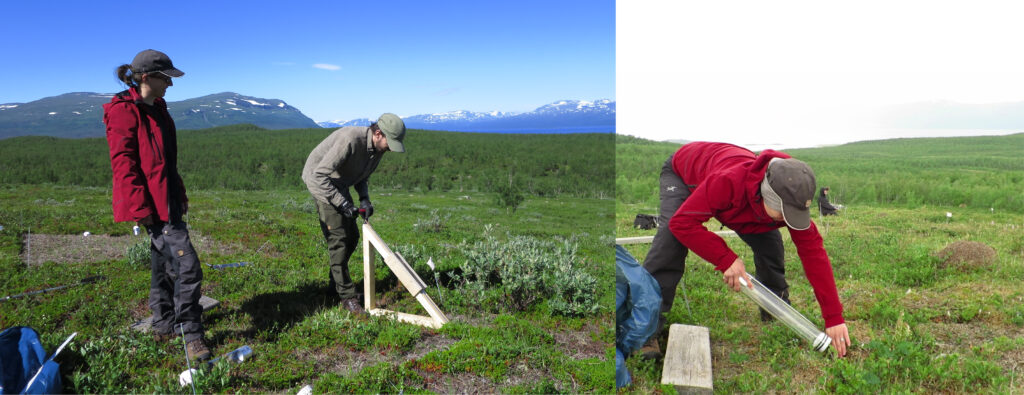
In parallel, we were hot gluing nylon micromeshes to the PVC collars at the research station, assembling the minirhizotron tubes, hauling them to the research site and installing them in the plots. Two weeks down the road, we were done with the construction works and it was time to do some proper science.
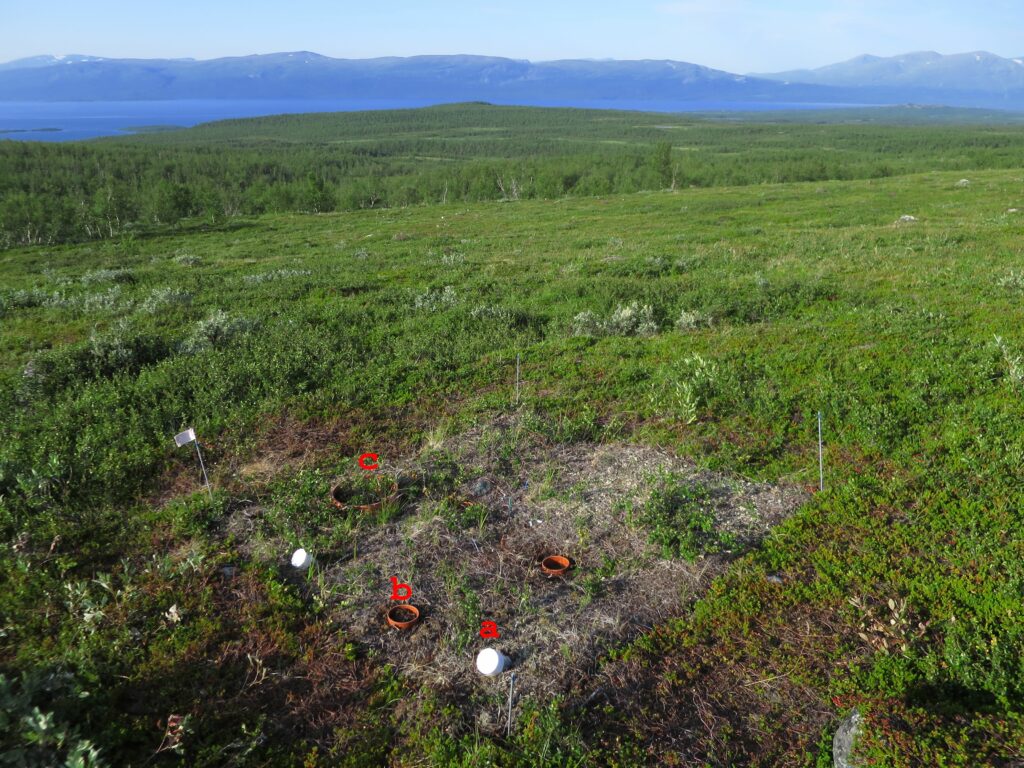
Each day one of us would jog for an hour to the field site and bring back fresh plant and soil samples, which underwent a series of physicochemical extractions, biological assays or simply storage for further processing at specialized microbiology labs.
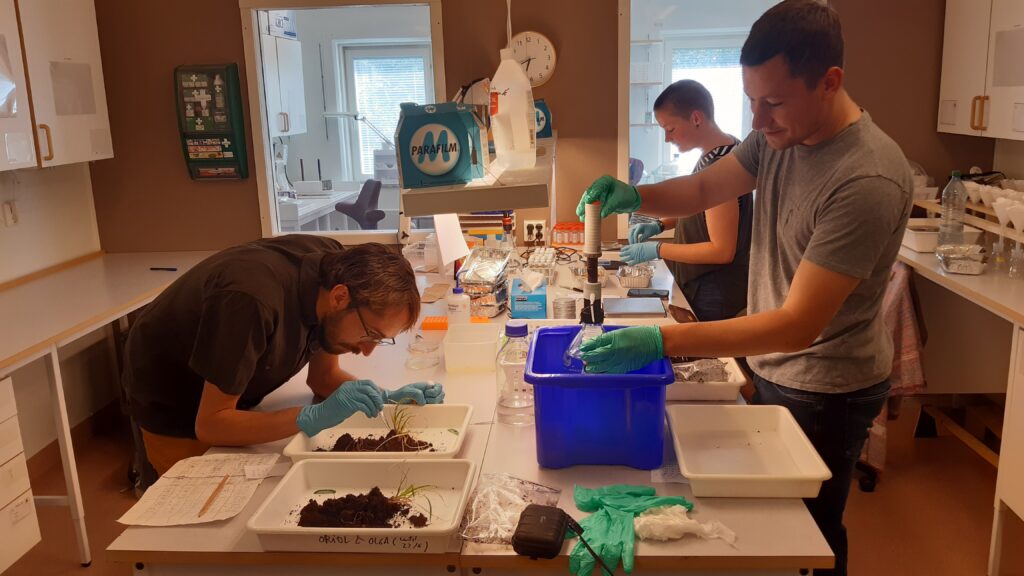
We were pleased to have two interns, a master student and a field assistant with us to manage these tasks. It also allowed us, as early career scientists, to gain management skills and organize the work of others. Of course, that came at the expense of working past diner time, when we still had to plan everyone’s tasks for the coming days in the field and the lab. The next step will be to secure more funding to finance the work of our future PhD students, who will continue to harvest the results of these initial time and resource investments during the four-year setup phase. With two of our female team members being already at the assistant professor level, we should not be waiting for long.
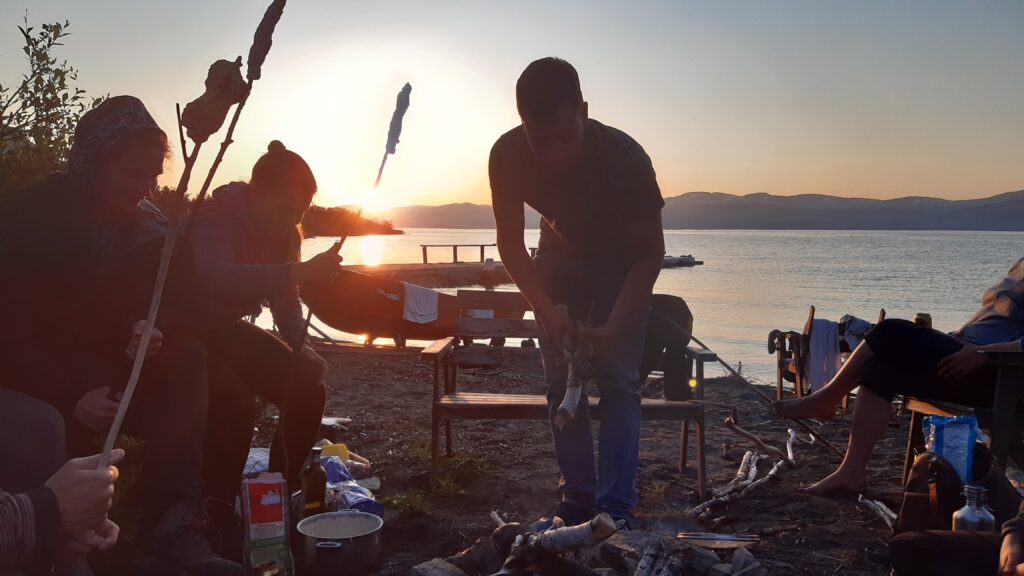
Konstantin Gavazov is a researcher associate at the WSL. His field trip took place in summer 2021 with financial support from an SPI Exploratory Grant.
Header photograph: A minirhizotron acrylic tube, capped with an opaque lid and ready for repetitive root camera scans in the coming decade(s). Dwarf birch, bilberry and crow berry shrubs, cryptogam mats and sparse sedges, grasses, forbs make up for the vegetation above the treeline in Abisko, Sweden. © 2021 Gesche Blume-Werry, all rights reserved